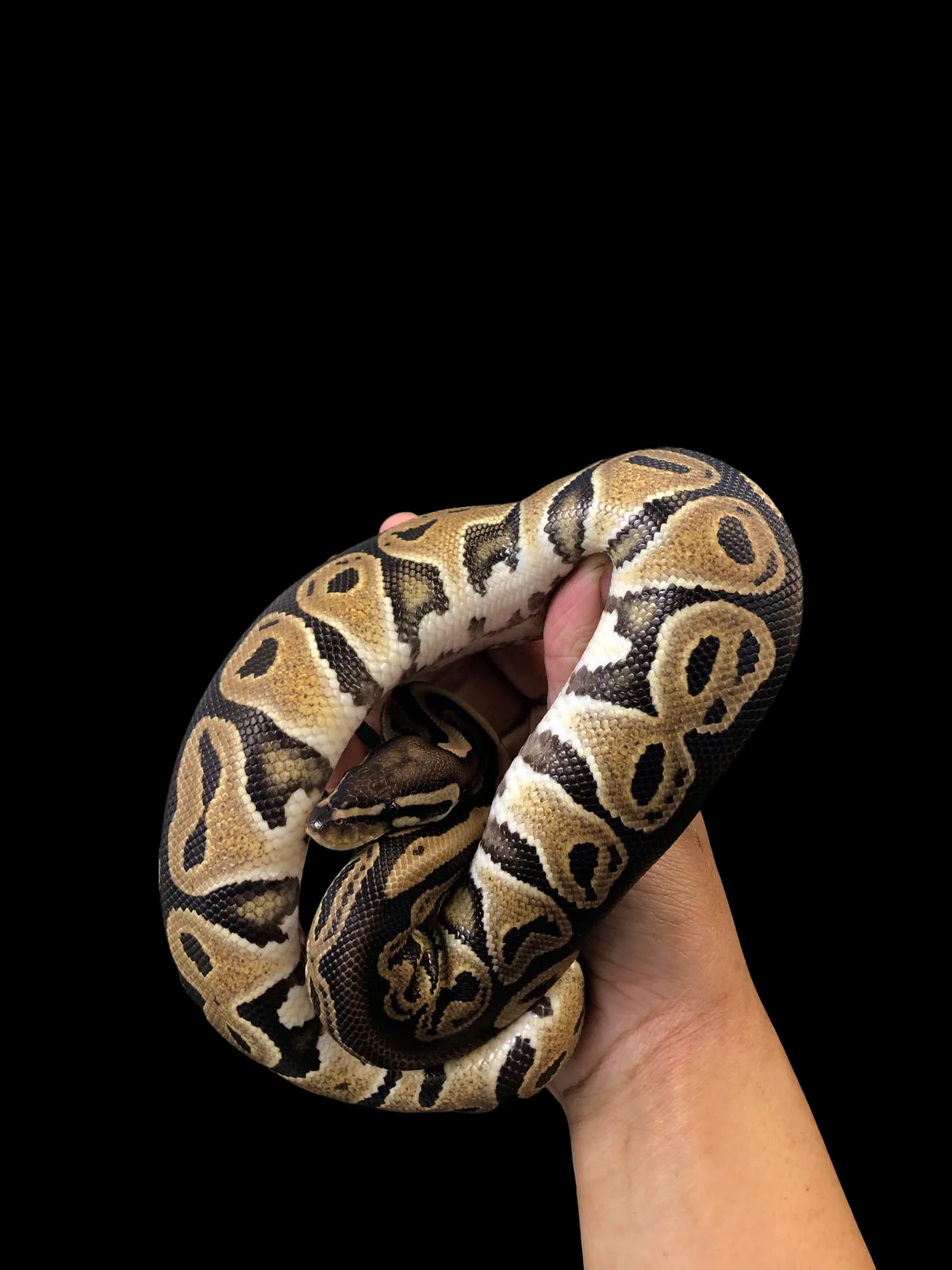Photo Disclaimer
Description
Ball Python (Normal)
Python regius
Common Names: Ball Python, Royal Python, Wild-Type Ball Python
Species Overview
-
Size: Adult ball pythons generally grow 3–5 feet (0.9–1.5 m), with females typically being larger and more robust than males. Some exceptional females may reach up to 6 feet.
-
Appearance:
-
The Normal or wild-type ball python displays the species’ natural appearance: a dark brown to black base colour, lighter tan to golden blotches, and a pale belly often patterned with grey or black speckling.
-
Their patterns vary widely in intensity and contrast, forming the foundation for all modern morphs.
-
-
Distribution: Native to West and Central Africa, ball pythons range across Ghana, Togo, Benin, Nigeria, and surrounding regions.
-
Habitat: Found in savannahs, grasslands, and agricultural edges, they are highly terrestrial and favour rodent burrows for security, stable humidity, and thermoregulation.
-
Behaviour: A nocturnal ambush predator, feeding on small mammals and birds. In the wild, they often remain hidden for long periods, striking quickly when prey passes.
Captive Care
-
Enclosure: Adults thrive in a 40-gallon breeder (36” × 18” × 18”) or equivalent. Provide secure hides on both the warm and cool sides, climbing décor, and a water dish large enough for soaking.
-
Temperature & Humidity: Maintain daytime temperatures of 78–82°F (25–28°C) with a basking area of 88–92°F (31–33°C). Nighttime dips to 72–75°F (22–24°C) are acceptable. Keep humidity at 50–60%, with higher levels during shedding cycles.
-
Diet: Juveniles feed well on hopper mice or rat pups every 5–7 days; adults typically eat medium rats every 10–14 days. Adjust prey size to the girth of the snake.
-
Behaviour in Captivity: Ball pythons are famed for their docile and calm temperament, which, combined with their manageable size, makes them one of the most popular pet snakes worldwide.
-
Special Considerations: The Normal morph is the foundation of all ball python morphs, with every gene and designer combo ultimately derived from wild-type animals.
Genetics Note
-
Normal (Wild-Type): Carries no visible morph traits but can still be heterozygous for recessive genes if lineage proves it.
-
Role in Breeding: Essential for establishing baseline genetics, Normals are often used to outcross and strengthen bloodlines in morph projects.
The Normal Ball Python is the standard, naturally occurring form of the species—both the starting point for all morphs and a beloved snake in its own right for its hardiness, docility, and beauty.

